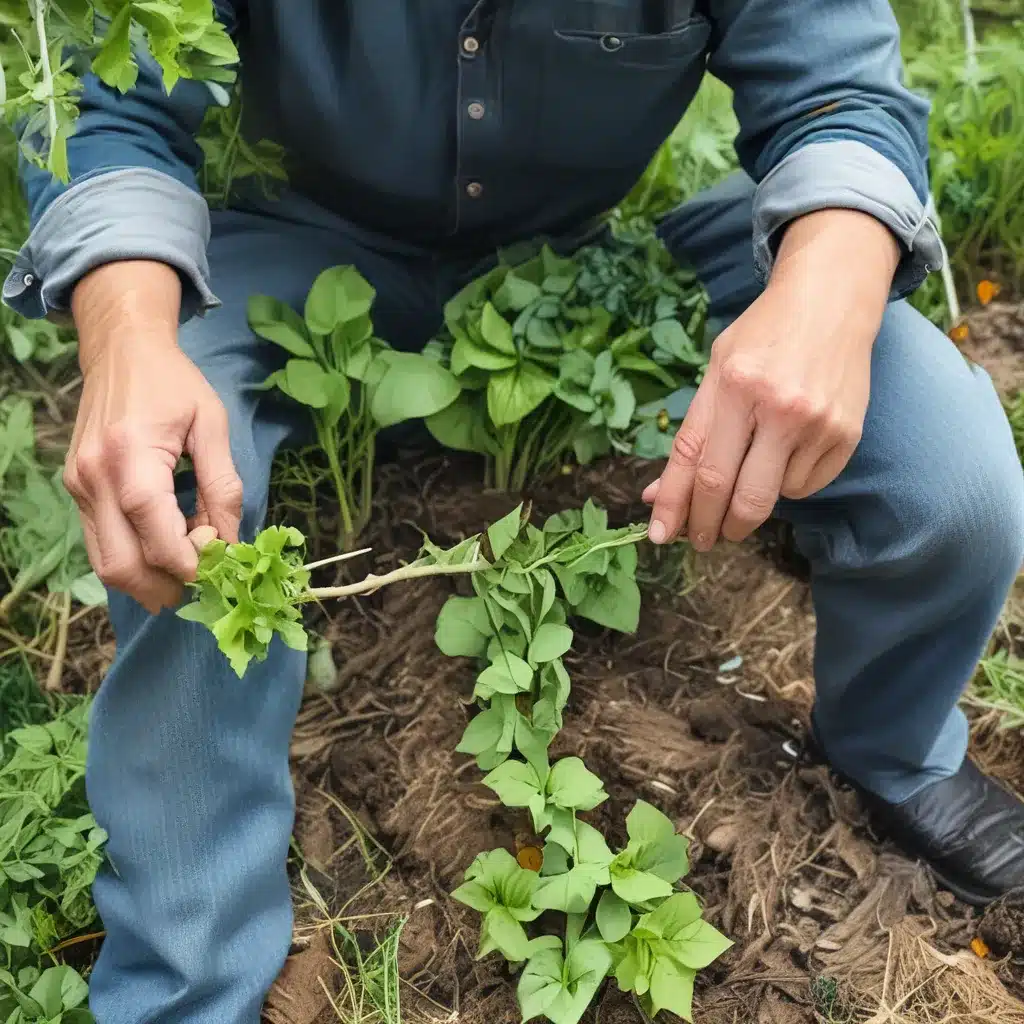
Have you ever strolled through a lush, thriving garden and felt a sense of wonder at the incredible diversity of life around you? Well, my fellow CSA enthusiasts, that’s exactly the kind of magic we’re going to explore today.
You see, I’ve discovered a secret weapon for taking your community-supported agriculture (CSA) to the next level – and it all comes down to the power of intercropping. Now, I know what you’re thinking: “Intercropping? Isn’t that just a fancy term for planting a bunch of random stuff together?” Well, my friends, let me tell you, there’s so much more to it than that.
Unraveling the Wonders of Intercropping
Imagine a vibrant tapestry, where each thread represents a different plant, woven together to create a stunning, harmonious design. That’s the essence of intercropping – the strategic planting of multiple crops in the same space, with the goal of harnessing the synergistic benefits that arise from their interactions.
As I delved into the research, I was amazed to learn just how impactful this approach can be for your CSA. Studies have shown that intercropping can boost food availability, enhance access and utilization, and improve the overall stability of your food system. In other words, it’s a powerhouse for tackling the four pillars of food security.
Boosting Food Availability
Let’s start with the most obvious benefit: increased food production. By carefully selecting compatible crops and arranging them in the right way, you can maximize the use of available resources like sunlight, water, and nutrients. Imagine a scenario where your tomato plants are intertwined with a lush carpet of leafy greens, each thriving in their own unique way and contributing to the overall bounty.
Research has shown that diversified cropping systems and traditional agroecosystems can be less vulnerable to catastrophic loss, helping to ensure a consistent supply of nutritious foods. And let’s not forget the role of biodiversity in maintaining ecosystem health – the more diverse your garden, the more resilient it becomes in the face of pests, diseases, and environmental stresses.
Enhancing Food Access and Utilization
But the benefits of intercropping extend far beyond just increasing the quantity of food produced. Studies have found that it can also improve access to food and enhance its nutritional value. By incorporating a wider variety of crops, you’re ensuring that your CSA members have access to a diverse range of essential nutrients, vitamins, and minerals.
Imagine the delight of your members as they open their weekly CSA box to find a cornucopia of vibrant, flavorful produce – from juicy tomatoes and crisp cucumbers to nutrient-dense leafy greens and hearty root vegetables. Not only will this make for a more visually appealing and satisfying experience, but it will also contribute to their overall health and well-being.
Stabilizing the Food System
And let’s not forget about the all-important element of stability. As we’ve seen in recent years, our global food system can be incredibly vulnerable to disruptions, whether it’s extreme weather events, supply chain issues, or even geopolitical tensions. Intercropping can help to strengthen the resilience of your CSA, making it better equipped to withstand these types of shocks and ensure a steady supply of food for your community.
By diversifying your crops and creating a more complex, interconnected ecosystem, you’re reducing the risk of a single catastrophic event wiping out your entire harvest. If one crop experiences a setback, the others can pick up the slack, maintaining a consistent flow of produce and keeping your members well-fed.
Unlocking the Secrets of Successful Intercropping
Okay, so we’ve covered the incredible benefits of intercropping, but how do you actually make it work in your CSA? Well, my friends, it’s all about finding the right balance and creating the perfect synergies.
The key is to carefully select crops that complement each other, both in terms of their physical characteristics and their growing requirements. For example, you might pair a tall, sprawling crop like pole beans with a shorter, bushier one like basil. The beans can provide shade and support for the basil, while the basil’s strong scent can help deter pests from the beans.
Or, you could experiment with a combination of deep-rooted and shallow-rooted crops, like carrots and lettuce. The carrots can help to break up the soil and access deeper nutrients, while the lettuce can thrive in the uppermost layers, creating a harmonious balance.
At Thornappple CSA, we’re constantly experimenting with new and innovative intercropping strategies to keep our members on their toes and their taste buds delighted. From the classic trio of corn, beans, and squash to more unexpected combinations like radishes and kale, we’re always looking for ways to push the boundaries and unlock the full potential of our garden.
Embracing the Challenges and Reaping the Rewards
Now, I know what you might be thinking: “Wow, this all sounds great, but doesn’t it sound like a lot of work?” And you know what? You’re absolutely right. Successful intercropping does require a bit more planning, observation, and maintenance than a more traditional monoculture approach.
But let me tell you, the rewards far outweigh the challenges. Think about the sense of pride and accomplishment you’ll feel when you see your vibrant, thriving garden bursting with a kaleidoscope of colors, textures, and flavors. And the joy on your members’ faces as they discover new and unexpected delights in their weekly CSA box? That’s the kind of magic that makes it all worth it.
So, my fellow CSA enthusiasts, I encourage you to embrace the power of intercropping and let your garden flourish with a symphony of life. Who knows, you might just discover a whole new world of culinary possibilities and create a truly one-of-a-kind experience for your community.



